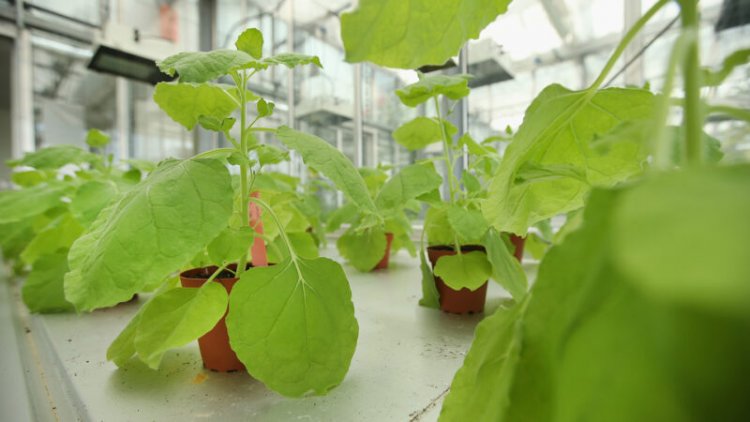Plant/animal hybrid proteins could help crops fend off diseases
Pikobodies, bioengineered proteins that are part plant and part animal (thanks, llamas), loan plant immune systems a uniquely animal trait: flexibility.

A new biological mashup just dropped.
“Pikobodies,” bioengineered immune system proteins that are part plant and part animal, could help flora better fend off diseases, researchers report in the March 3 Science. The protein hybrids exploit animals’ uniquely flexible immune systems, loaning plants the ability to fight off emerging pathogens.
Flora typically rely on physical barriers to keep disease-causing microbes at bay. If something unusual makes it inside the plants, internal sensors sound the alarm and infected cells die. But as pathogens evolve ways to dodge these defenses, plants can’t adapt in real time. Animals’ adaptive immune systems can, making a wealth of antibodies in a matter of weeks when exposed to a pathogen.
In a proof-of-concept study, scientists genetically modified one plant’s internal sensor to sport animal antibodies. The approach harnesses the adaptive immune system’s power to make almost unlimited adjustments to target invaders and lends it to plants, says plant immunologist Xinnian Dong, a Howard Hughes Medical Institute investigator at Duke University who was not involved in the work.
Crops especially could benefit from having more adaptable immune systems, since many farms grow fields full of just one type of plant, says Dong. In nature, diversity can help protect vulnerable plants from disease-spreading pathogens and pests. A farm is more like a buffet.
Researchers have had success fine-tuning plant genes to be disease-resistant, but finding the right genes and editing them can take more than a decade, says plant pathologist Sophien Kamoun of the Sainsbury Laboratory in Norwich, England. He and colleagues wanted to know if plant protection could get an additional boost from animal-inspired solutions.
To create the pikobodies, the team fused small antibodies from llamas and alpacas with a protein called Pik-1 that’s found on the cells of Nicotiana benthamiana, a close relative of tobacco plants. Pik-1 typically detects a protein that helps a deadly blast fungus infect plants (SN: 7/10/17). For this test, the animal antibodies had been engineered to target fluorescent proteins
Plants with the pikobodies killed cells exposed to the fluorescent proteins, resulting in dead patches on leaves, the team found. Of 11 tested versions, four were not toxic to the leaves and triggered cell death only when the pikobodies attached to the specific protein that they had been designed bind.
What’s more, pikobodies can be combined to give plants more than one way to attack a foreign invader. That tactic could be useful to hit pathogens with the nimble ability to dodge some immune responses from multiple angles.
Theoretically, it’s possible to make pikobodies “against virtually any pathogen we study,” Kamoun says. But not all pikobody combos worked together in tests. “It’s a bit hit or miss,” he says. “We need some more basic knowledge to improve the bioengineering.”
What's Your Reaction?



























































